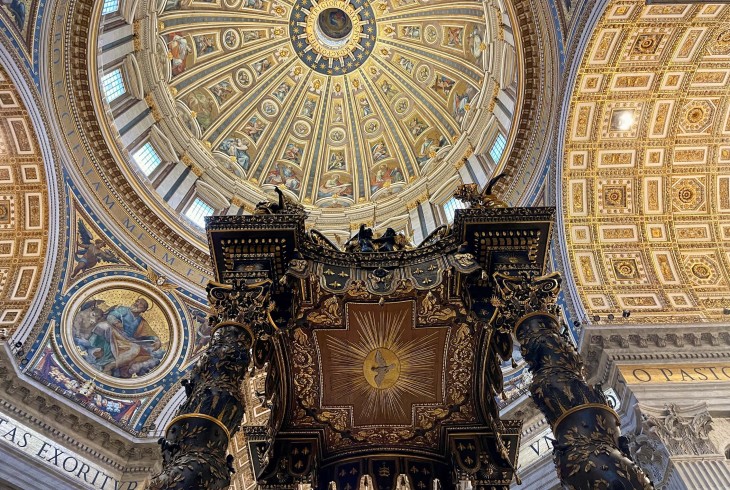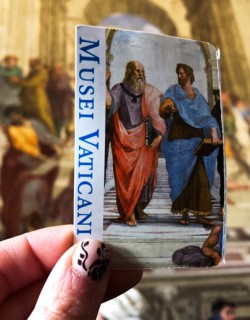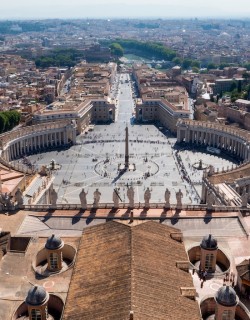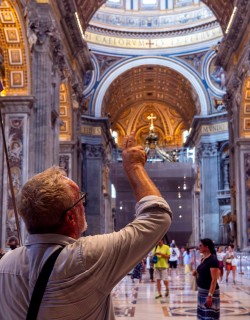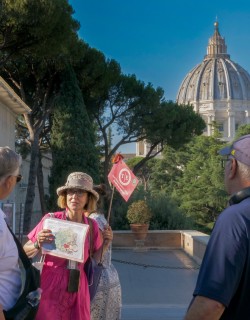Newly Updated 29 January 2025
When in Rome, a visit to the Vatican Museums needs to be one of the first things you pencil into your itinerary. Boasting jaw-dropping highlights like Michelangelo’s frescoes in the Sistine Chapel, Raphael’s era-defining Renaissance painting the School of Athens and ancient sculptures like the Laocoon and Apollo Belvedere, a guide tour of the Vatican is a once-in-a-lifetime experience. But what to do when you’re done in the Vatican?
After you’ve explored the treasures of the Vatican Museums, don’t rush away. The neighborhoods around the Vatican are home to an array of great sites and things to do, from Renaissance palaces to cute neighborhoods, tranquil gardens and bustling markets. Find out how to make the most of your time with our guide to 10 great things to do near the Vatican.
Masterpieces of Art at St. Peter’s
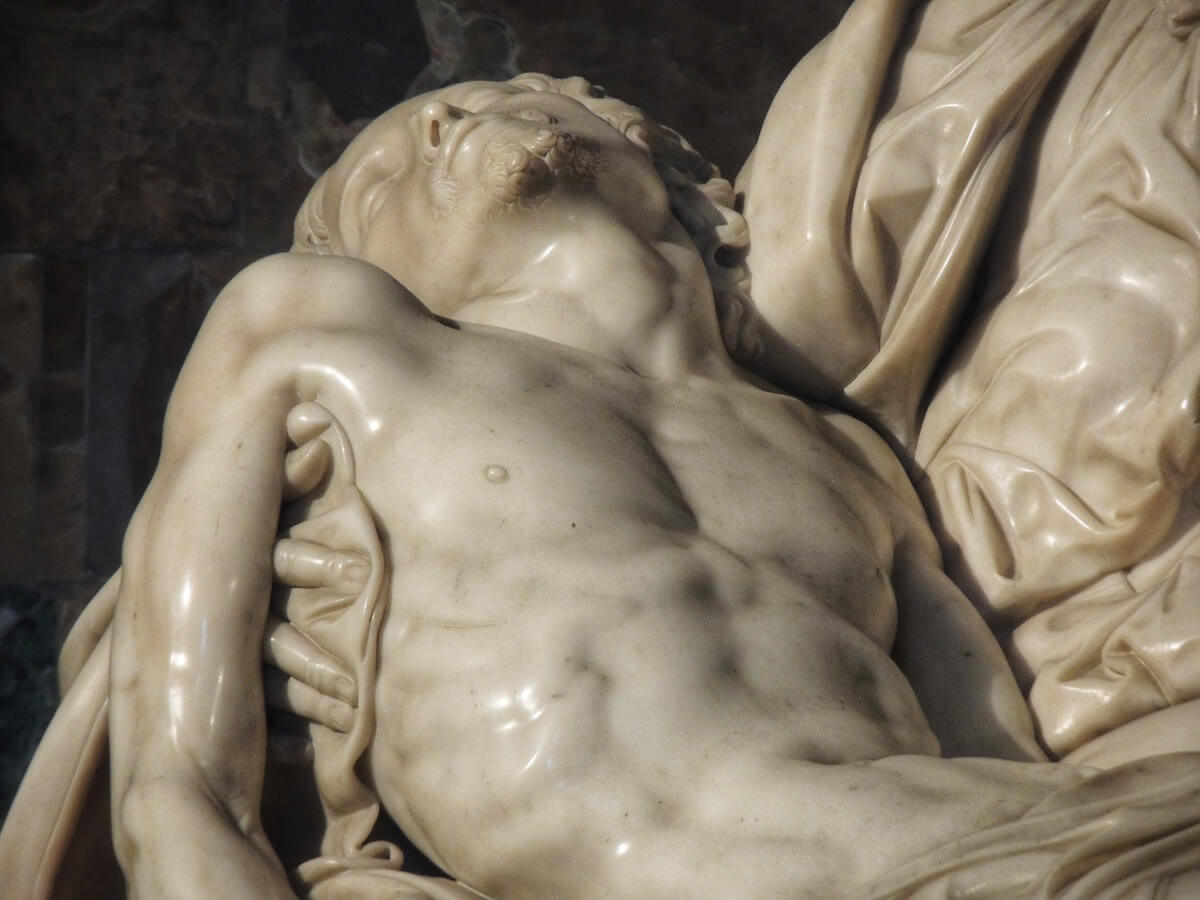
It almost goes without saying, but the first place you need to visit after touring the Vatican Museums is adjacent St. Peter’s Basilica, Rome’s (and arguably the world’s) most important church. Beyond its role as the mother church of the Catholic faith, Saint Peter's is also a wonderful showcase of Renaissance and Baroque art. Masterpieces you’ll want to look out for include Michelangelo's powerful Pietà and Bernini’s magnificent Baldacchino canopy - recently unveiled in all its original glory after a meticulous restoration - which marks the grave of the apostle.
Unsurprisingly, St. Peter’s is a very popular place to visit, and many the unwary traveler has found themselves queuing for hours to enter the church. For this reason, the best way to visit St. Peter’s is as part of a tour that includes the basilica in an itinerary alongside the Vatican Museums.
On a special access Vatican Museums tour, you’ll be able to enter the church directly from a special shortcut leading off from the Sistine Chapel. If you’re visiting the Vatican alone, you won’t be able to take advantage of the shortcut and instead will need to exit the Museum and join the long entry queue snaking around St. Peter’s Square. Click here to learn more about how to take a tour of the Vatican Museums and St. Peter’s.
Fascinating History at Castel Sant’Angelo
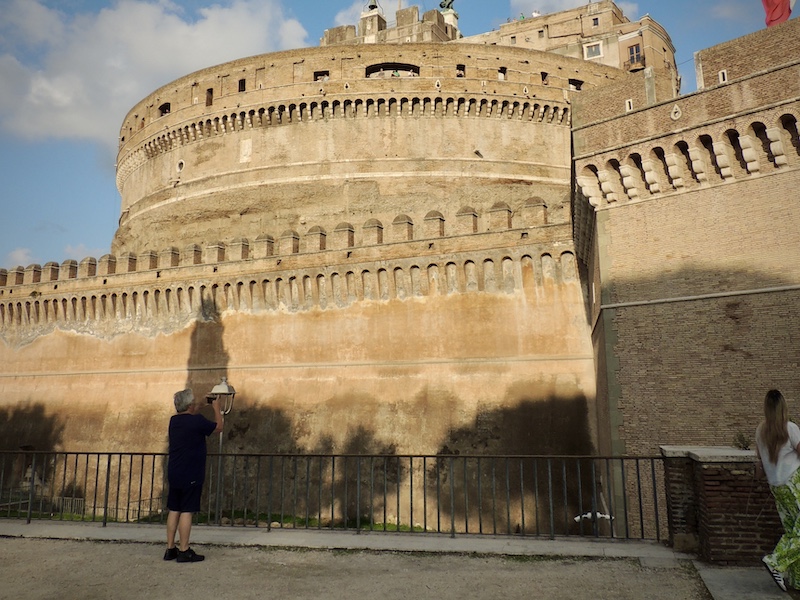
You will be sure to spot the imposing bulk of Castel Sant’Angelo overlooking the river Tiber when you visit the nearby Vatican. This seriously impressive hunk of masonry was originally built as the ancient emperor Hadrian’s magnificent mausoleum: a winding ramp descending deep into the edifice leads the way to the emperor’s final resting place.
But the story of Castel Sant’Angelo didn’t end with Hadrian. In the 6th century the mausoleum was transformed into a fortified papal residence that doubled as both prison and palace - a vital hideout for the pope when the political climate in the city got too hot to handle.
Today it’s well worth visiting the castle after a trip to the Vatican Museums to see the lovely 16th-century frescoes depicting the life of Alexander the Great that decorate the palace’s rooms as well as to wander around the castle's battlements. Look out for the giant sculpture of the archangel Michael on the roofline: the castle owes its name to a miraculous apparition of the angel sheathing his sword above the building during the reign of Pope Gregory the Great, signaling that a devastating plague was finally at an end.
Neighborhood Vibes in Trastevere
Trastevere, meaning "beyond the Tiber," is just a 10-15 minute walk to the south of the Vatican, and can lay claim to being Rome’s most charming neighborhood. This is the postcard-perfect Rome you’ve been dreaming about - think narrow cobbled streets where washing is strung out to dry between the teetering old apartment blocks, extraordinary churches stuffed with masterful artworks, lovely little piazzas growing thick with ivy, and ramshackle cafes that seem to have changed little in 50 years.
You can have a fantastic time in Trastevere just wandering around, but there are a few sites that you should aim to visit. First amongst them is superb Santa Maria in Trastevere, a grand old church sited in the neighborhood’s most buzzing square that is home to memorable medieval medieval mosaics. Other churches well with stopping in at include Santa Cecilia in Trastevere, dedicated to the patron saint of music, and San Francesco a Ripa, home to Bernini’s final masterpiece.
Renaissance Magic at the Villa Farnesina
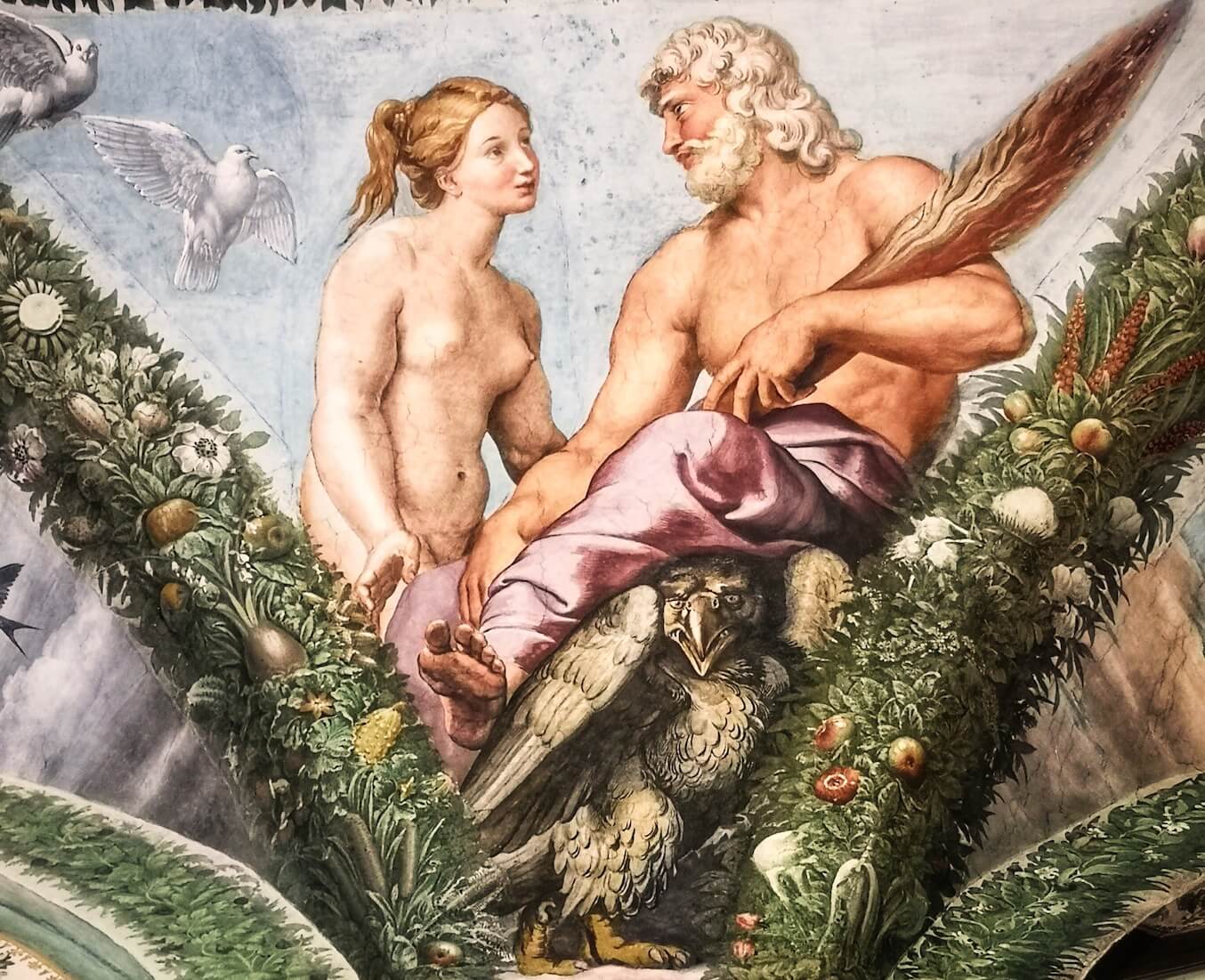
Boasting decorations by some of the 16th century’s finest artists, the Villa Farnesina is one of Rome’s great showcases of Renaissance art. Built by the fabulously wealthy Agostino Chigi, entrepreneur and financier to the popes, the luxurious residence was conceived of as a cross between a countryside villa and urban palace - a place suited equally to recreation and official business.
The finest artists of the age were called on to beautify Chigi’s river-side retreat, foremost amongst them Raphael. To celebrate Chigi’s upcoming wedding, the great artist and his workshop decorated the villa’s entrance loggia with a gorgeous fresco cycle portraying the ancient legend of the love affair between the divine Cupid and mortal Psyche. It’s sexy stuff, and clearly demonstrates the liberal values that pervaded Roman society in the high Renaissance.
Look out too for Raphael’s riotous fresco depicting the sea-nymph Galatea skimming across the waves in a shell pulled by dolphins, one of the Renaissance‘s most admired paintings. Upstairs, illusionistic frescoes of the Roman countryside and a fresco cycle recounting the wedding of Alexander the Great and Roxanne (another subject most suited to Chigi’s marriage) complete the picture. The Villa Farnesina is located between the Vatican and Trastevere, right on the banks of the Tiber.
Superb Views on the Janiculum Hill
It might not be one of the canonical seven hills of Rome, but don’t let that put you off making the climb up the Janiculum when in Rome. It’s located just a short distance to the south of Saint Peter’s Square, and with spectacular views spreading all across the city from its strategic position above the Tiber’s western bank, the hill is known as the ‘balcony of Rome’ for good reason.
The kilometer-long walk along the top of the hill might be the city’s most enjoyable early-evening passeggiata - perfect if you’ve stayed in the Vatican Museums until closing time! Along the way you’ll pass numerous panoramic terraces, a sculpture garden dedicated to the heroes of Italian unification and even a lighthouse.
To walk it, climb up the Salita di Sant’Onofrio off Piazza della Rovere to the south east of Piazza San Pietro. Once you get to the top, simply follow the Passeggiata del Gianicolo all the way to its southern end just over at the Acqua Paola fountain, from where you’ll be perfectly situated to descend into Trastevere for aperitivo hour.
Tranquility in the Vatican Gardens
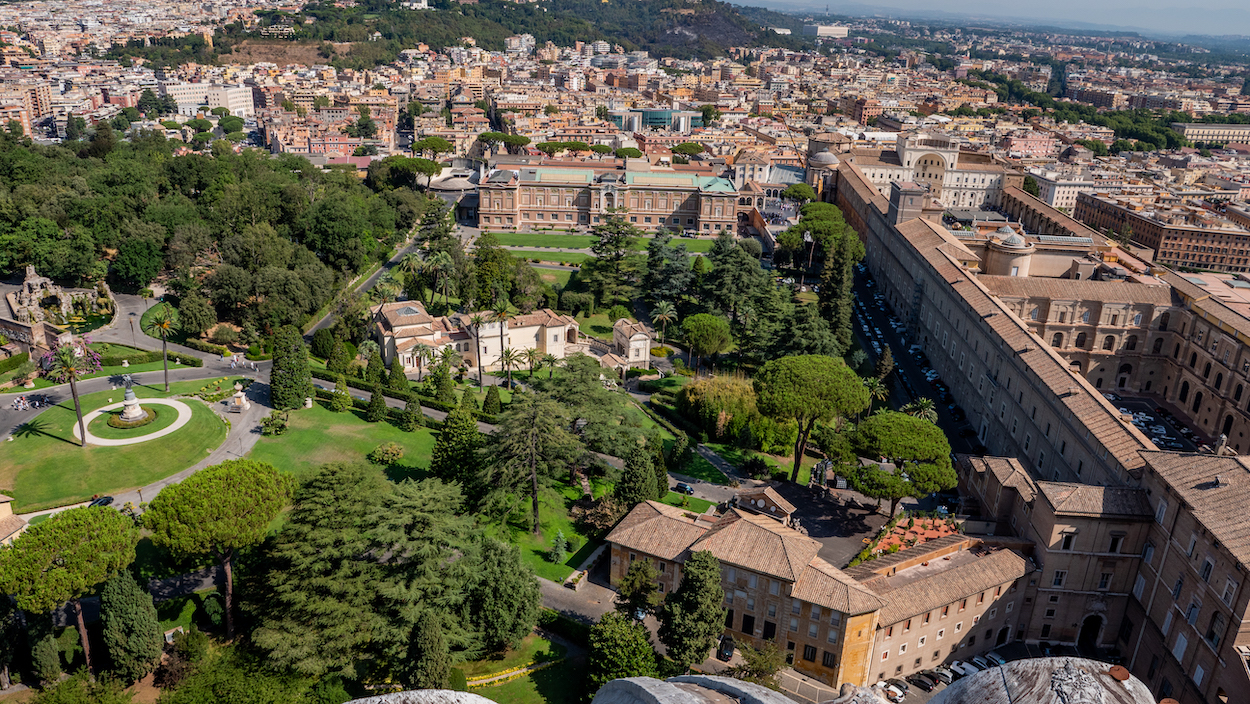
Did you know that more than two-thirds of the Vatican is given over to verdant gardens concealed behind the imposing Leonine walls, built in the 9th century to ward off Saracen marauders? A lush haven of exotic plants and flowers, the Vatican Gardens unfold along paths and around courtyards dotted with sculptures, fountains and temples that have provided the Pope with a tranquil refuge since the Middle Ages.
Whilst still exclusive, these days it's possible to walk in the footsteps of the popes and visit this peaceful oasis as part of your visit to the Vatican (though you’ll need to book your visit in advance). In the summer months, the gardens offer welcome calm and shade away from the heat and crowds of the nearby museums. What’s more, the gardens boast one of the best views of the basilica's great dome in all of Rome.
Learn more about the Vatican Gardens, and how to visit them, here: Visiting the Vatican Gardens
Foodie Delights at the Trionfale Market
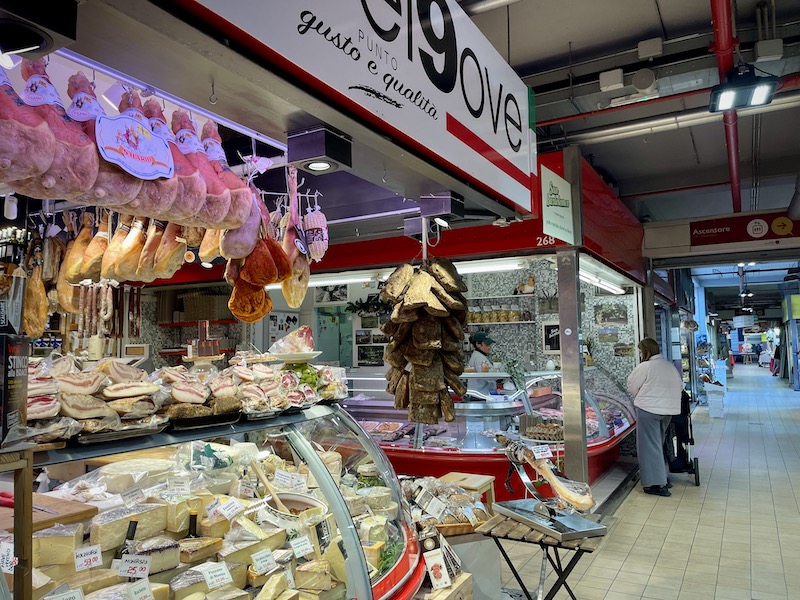
Neighborhood markets are still the lifeblood of Rome, and each quarter of the city boasts its own ‘mercato rationale.’ None is more impressive than the Trionfale market in the heart of the Prati district, just 3 minutes walk from the entrance to the Vatican Museums. A visit here is a treat for all the senses. Traders of all kinds arrive early to flog vegetables picked that morning from the Lazio fields, seafood freshly fished from the coast and farm-fresh meat to a motley crew of restaurateurs, home chefs and tourists.
The colorful, fragrant produce here is uniformly first-rate - pick up provisions for a picnic lunch or grab a porchetta sandwich from one of the stallholders for a real post-museum treat.
Medieval Wanderings in the Borgo
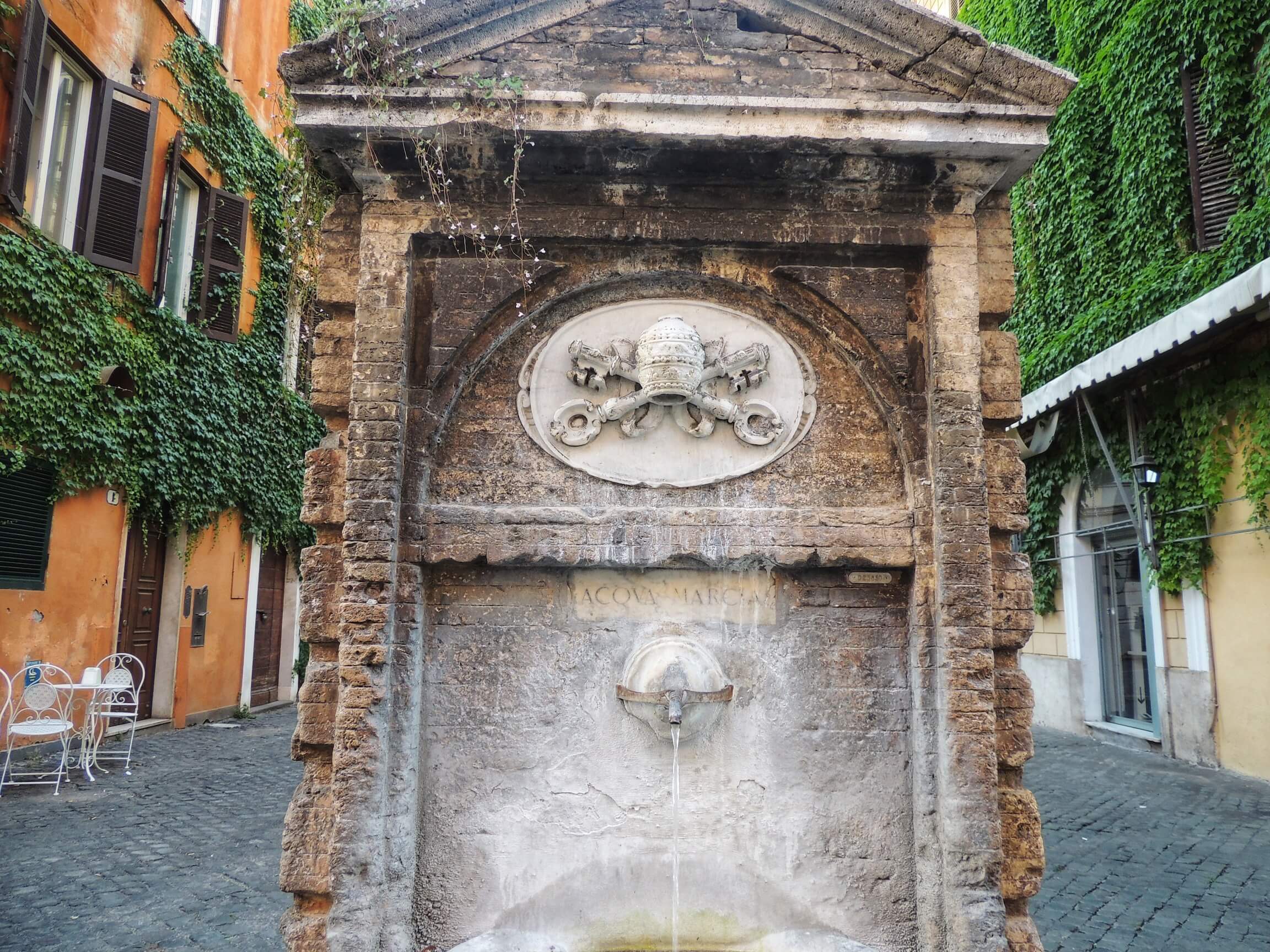
Surrounding the Vatican is the charming medieval quarter known as the Borgo. This area sprang up in the Middle Ages as pilgrimage numbers to the Vatican soared, and both lodgings and provisions were in increasingly high demand. Little has changed since then: the Borgo has retained its medieval character brilliantly, and even today is chock full of taverns and hostelries catering to hungry travelers to the Vatican.
Wandering down narrow lanes hemmed in by ivy-strewn facades and through little squares adorned by tinkling fountains is a lovely way to unwind after a tour of the Vatican Museums; and if you find yourself in need of refreshment, then the bustling Borgo Pio is home to some excellent bars and restaurants, including one of our favorite spots to sample carbonara in the city - the Pastificio del Borgo.
Papal Escapes at the Passetto del Borgo
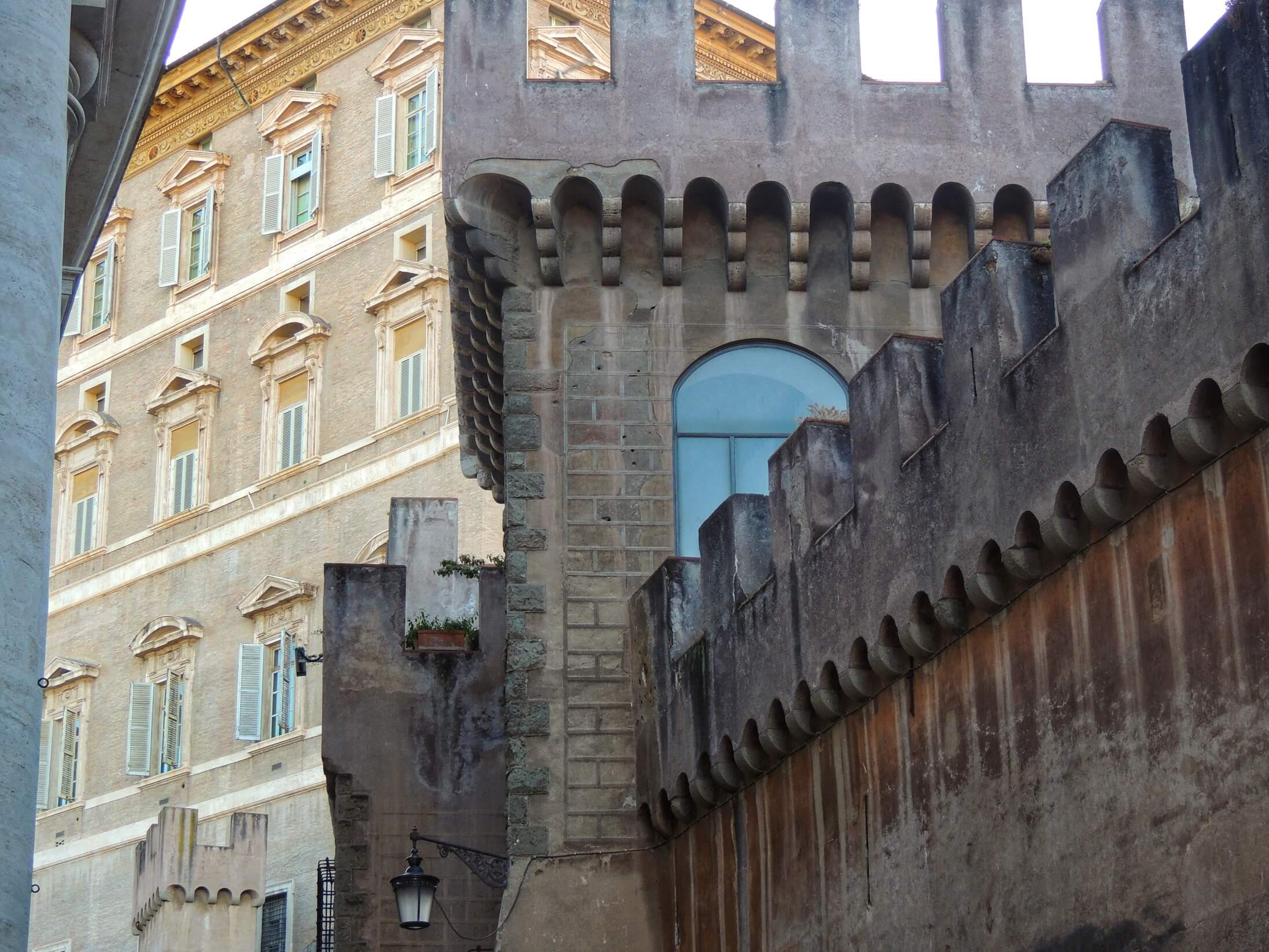
Connecting the Vatican Palace to Castel Sant’Angelo is this 800-meter long secret passageway built right into the city walls. Called the Passetto del Borgo, or in Roman dialect simply “Er Corridore,” the walkway originally formed part of a defensive structure built by the barbarian general Totila in the year 547 AD.
In the Middle Ages the popes transformed the fortification into a covered walkway providing an escape route from the Vatican in times of strife. During the devastating Sack of Rome in 1527, Pope Clement VII managed to flee the onrushing German soldiers via the passageway to the safety of Castel Sant’Angelo, where he holed up for six desperate months. The Passetto is normally visitable as part of the ticket to Castel Sant’Angelo, but is temporarily closed at the time of writing - check the official site here for updates.
Retail therapy on Via Cola di Rienzo
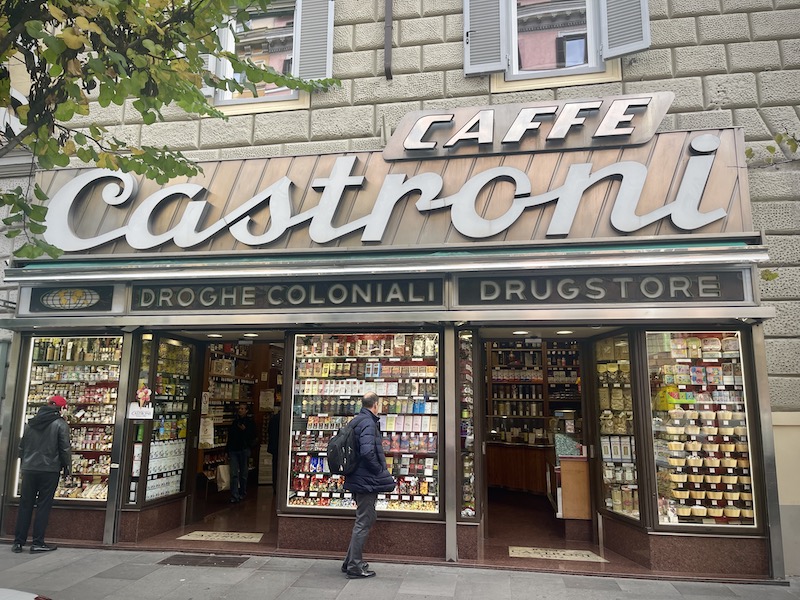
With its wide, tree-lined boulevards and impressive 19th-century buildings, the area directly to the north and west of the Vatican - known as Prati - often feels more like Paris than Rome. It’s one of the city’s most important business and retail districts, and sweeping Via Cola di Rienzo is situated right at the heart of the action: home to major department stores, concept design shops, boutiques, bookstores and more, whatever you’re looking for you’ll be sure to find it here.
It’s a much less tourist-oriented part of town than central streets like Via del Corso and Via dei Condotti, too, so you won’t be mobbed by crowds as you indulge in some retail therapy here either.
Through Eternity Tours offer a range of guided tours of St. Peter’s and the Vatican museums – join us and experience their splendor in company of our friendly expert guides!
MORE GREAT CONTENT FROM THE BLOG:
- The Best Vatican Tours to Take in 2024
- A Pilgrim and Tourists Guide to Jubilee 2025
- How to Climb the Dome of St. Peter's Basilica
- 7 Things You Need to See in St. Peter's Basilica
- Art and Faith in the Vatican: The History of St. Peter's Basilica
- Visiting St Peters and the Vatican Museums: A Practical Guide
- A Guide to the Vatican Gardens
